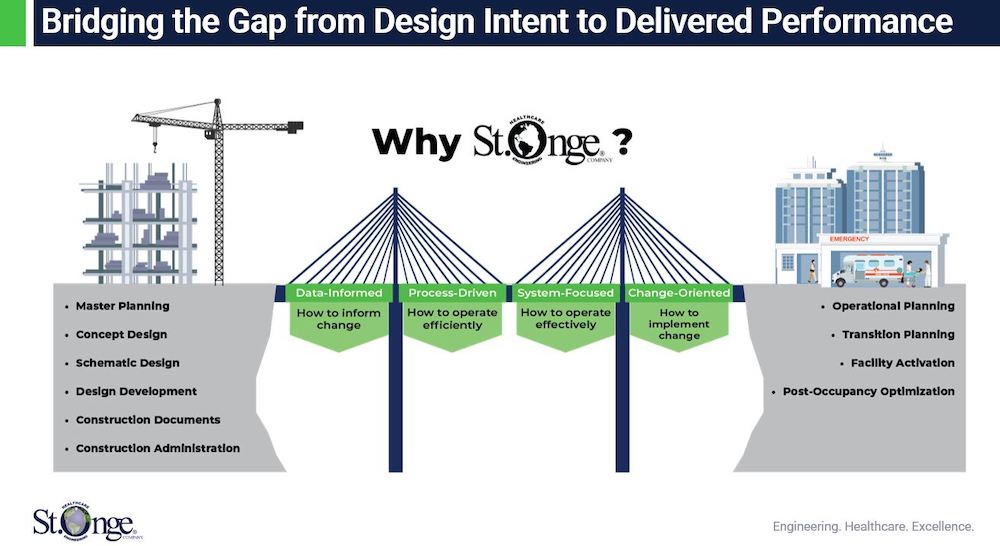One of the most critical steps in the implementation of change is the final one- the Activation Stage, the point where theory and planning turns immediately to practice and results. The naïve assumption at this point is that the organization can simply lift and shift their operations and continue to run as they previously did.
Generally, when planning large-scale change, organizations choose partners with experience in the Design and Planning process to help them design the future facility. They use Data to determine Demand for both equipment, staffing and space. They pour over charts and spreadsheets, create special focus groups, build models, discuss those models with staff, revise those models constantly until they agree on the way to go forward. Thus, the operational design intent is born.
In the graphic above, the gray areas represent the bedrock of the “old” or existing as well as the bedrock of the “new” or future state. The suspension spans between the two represent the activities needed to create the pathway from old to new- Informing the workforce about the changes, creating the policies and procedures necessary to make the “new” operational, and ultimately, completing the elimination of the gap between ideation and implementation.
Even though the graphic depicts a simplistic viewpoint, the complexity to prepare the organization for a new and/or expanded facility is not for the faint of heart. Too often organizations will invest in the operational and transition planning but aren’t truly ready to embrace the operational design intent of the facility.
Organizations that choose to forego engaging help with the Activation Process can have devastating and costly consequences. While two elements of the Implementation Phase (Operational Planning and Transition Planning) may have been completed before the doors are opened and the lights are turned on, Facility Activation is a very critical phase and demands help from expertise beyond that of the organization’s staff.
It is important to keep in mind that when change is implemented, it is implemented on the fly. Operations and expectations for excellent service remain the same or increase with the advent of the “new.” Honeymoon periods at the point of use are short or non-existent. People who need supplies or equipment to do their jobs, expect them to be there- on time and without excuses- all of which add to the criticality of a successful Activation Phase.
Engaging third-party aid in the Activation Phase can help organizations by:
- Making refinements in workflows, policies and procedures
- Adjusting point of use inventories and stocking procedures
- Providing “extra hands” during the learning and training process
- Bringing learned experiences and best practices from other projects
- Acting as intermediaries with the point of use customers
- Overcoming the fears and trepidations associated with starting something new
When change comes to an organization, two concerns arise. The customer at the point of use expects service to remain at a high level or even improve. The danger comes when Activation goes awry and Credibility is compromised. To quote an old standby, “You only have one chance to make a first impression.” Failure at Activation can take months or years to overcome. Sometimes, credibility is never regained.



